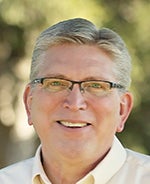Guest column: Opportunities available in protective services
Published 8:45 pm Tuesday, March 5, 2024
|
Getting your Trinity Audio player ready...
|
Guest column by Gary Schindler
Iconic lawman Sargent Joe Friday was famous for saying, “Just the facts ma’am.” As we explore the field of protective and public services, that will be our focus. One of the best sources to explore job opportunities and the job market by careers or occupational fields is the Occupational Outlook Handbook (www.bls.gov/ooh). The always current OOH informs us that we can expect approximately 64,500 police and detective job openings each year for the next decade. When we add the occupations of correction officers, firefighters and criminal investigators, the annual job opening rate jumps to nearly 410,000.
The starting salary for these positions is between $39,000 to $69,000 a year. One of the lead faculty members in Riverland Community College’s Public Safety Careers Department, Richard Watkins, informed me that the job placement rate for the graduates within the department is 100%. In addition, he noted that the salaries for the college’s graduates are in the range of $30 to $44 an hour. That would translate to an annual salary of $62,000 to $91,500.
Most careers in this field require some form of post-secondary education. Leadership within the Albert Lea Police Department informed me that the training provided by the Public Safety Department at Riverland and the regional state universities are well respected by law enforcement. With that said, let’s examine what Riverland and other colleges in the region have to offer for the individual exploring a career in the protective and public services.
Riverland offers the following majors in criminal justice, corrections, and protective services:
• Criminal justice — two-year Associate of Science transfer degree
• Criminal justice — corrections — one-year diploma program
• Criminal justice — public safety dispatch — one-year diploma program
• Peace officer — two-year Associate of Science transfer degree
• Peace officer/publicsafety (non-Minnesota Peace Officers Standards and Training Board) — two-year Associate of Science degree
• Fire services: One-year certificate
It is important to note that the Associate of Science degree graduates can immediately seek employment after graduation and completing skills training.
Both the criminal justice — two-year Associate of Science transfer degree and the peace officer — two-year Associate of Science transfer degree are part of a Transfer Pathways Program that ensures transfer to junior level status to bachelor’s degree programs in criminal justice and law enforcement at Minnesota State System universities. Some examples include Minnesota State-Mankato and Winona State University. Their bachelor’s degree options include:
Minnesota State-Mankato
• Criminal justice
• Corrections
Winona State University
• Correction and justice services
Outside of criminal justice and corrections, there are other majors related to protective services that are offered by the state universities that serve high school graduates and adult learners in southcentral Minnesota. Minnesota State-Mankato has a major in policing studies and Winona State University offers majors in law (3+3), law and society, legal studies and paralegal studies.
Concerning his job as a police officer in a city that experiences crime, Joe Friday said, “That’s where I come in, doing my job to the best of my ability on a daily basis. I’m Joe Friday. I work here. I carry a badge.” I would encourage students in our area schools and adults seeking a career change to explore the wealth of education options and career opportunities in the protective services. Students work with your school counselors. They have a number of resources to help you explore your interests, help with career and college exploration and planning, and great relationships with area colleges. Explore financial aid and scholarship opportunities to help make college affordable. Take a look at College in Our Schools (Concurrent or Post-Secondary Enrollment Options) to get a head start on earning free college credit for transfer to all of the colleges mentioned in this article. I can assure you that there are a number of rewarding career opportunities across southcentral Minnesota, the rest of the state and Midwest.
Gary Schindler is a former teacher, school and college counselor, financial aid director and dean of students. Over the course of his career, he has received state and regional awards for his achievements in career counseling program development and student affairs administration. Schindler currently serves as the Vice Chair of the District 241 School Board and on their Business Education Committee.


